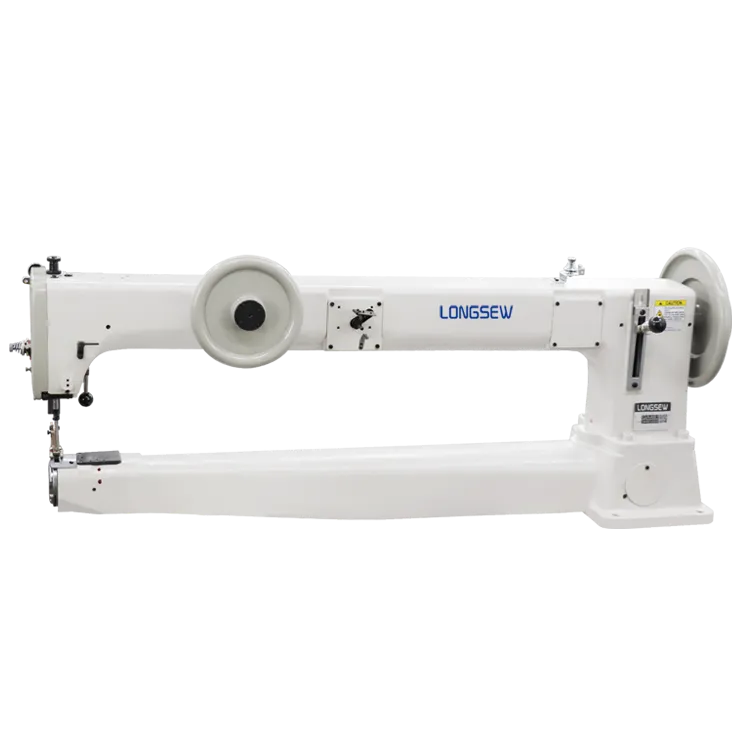Understanding the Purpose and Functionality of a Serger Overlock Machine
What is a Serger Overlock Machine?
In the world of sewing, equipment plays a crucial role in determining the quality and efficiency of finished projects. Among the various machines that sewists can use, the serger overlock machine stands out for its unique capabilities and functionalities. This specialized tool is designed to make sewing easier, quicker, and more professional-looking, especially when working with knit fabrics or seams. But what exactly is a serger overlock machine, and how does it differ from a regular sewing machine?
Understanding the Serger
At its core, a serger, also known as an overlock machine, is designed to create a finished edge on fabrics while also sewing seams. Unlike traditional sewing machines, which typically use two threads (one for the needle and one for the bobbin), sergers often use three to five threads, allowing for more complex stitching options. This multiple-thread capability enables sergers to trim, sew, and overcast the edge of the fabric in one step, making it an invaluable time-saver for sewists.
The serger's primary function is to eliminate fraying and unraveling at the raw edges of the fabric. This is particularly important for fabrics like knits, which have a tendency to stretch and distort. The serger achieves this by encasing the edges of the fabric in thread, providing a clean finish that enhances durability and wearability.
Key Features of a Serger Overlock Machine
1. Cutting Blade One of the most distinguishing features of a serger is its built-in cutting blade. This blade trims the fabric as it is fed through the machine, ensuring a precise edge for stitching. This is especially useful for working with multiple layers of fabric, where a clean edge is essential for a professional look.
2. Differential Feed Another significant feature is the differential feed mechanism. This allows the serger to adjust the feed dogs' movement separately, helping to control the stretching or gathering of the fabric as it is fed through the machine. This feature is beneficial when sewing knit fabrics that can easily stretch out of shape.
what is a serger overlock machine

3. Various Stitch Options Serge machines offer a variety of stitch options, including standard overlock stitches, rolled hems, and flatlock seams. These stitches can be adjusted for width and length, allowing sewists to customize their stitching for different types of projects.
4. Speed Serger overlock machines operate at high speeds, making them perfect for projects that require a lot of stitching. While traditional sewing machines may sew at speeds of around 800 stitches per minute, many sergers can exceed 1,500 stitches per minute, significantly increasing productivity.
Benefits of Using a Serger Overlock Machine
The advantages of incorporating a serger into your sewing arsenal are plentiful. For one, the professional-quality finish it provides can elevate the appearance of home-sewn garments and projects. The speed and efficiency of a serger also save time, allowing for quicker completion of projects without sacrificing quality.
Moreover, sergers can handle a wide variety of fabrics beyond knits, including lightweight silk and denim. Their versatility makes them suitable for an array of sewing projects, from clothing and home decor to crafting and quilting.
Conclusion
In summary, a serger overlock machine is an essential tool for both novice and experienced sewists alike. Its unique features, such as multiple-thread capabilities, built-in cutting blades, and differential feed, set it apart from traditional sewing machines. By understanding how to use a serger effectively, sewists can create professional-quality garments and projects with ease. Whether you are looking to sew garments, craft items, or simply finish edges neatly, a serger can be an invaluable addition to your sewing toolkit.
-
Industrial Cylinder Arm Sewing Machine: Revolutionizing Heavy-Duty SewingNewsJul.28,2025
-
Cylinder Arm Sewing Machine: Perfect for Special Sewing ApplicationsNewsJul.28,2025
-
Cylinder Bed Sewing Machine: Essential for Sewing Complex MaterialsNewsJul.28,2025
-
Heavy Duty Sewing Machine: The Essential Tool for Industrial ApplicationsNewsJul.28,2025
-
Computerized Pattern Sewing Machine: Revolutionizing Precision StitchingNewsJul.28,2025
-
Heavy Duty Industrial Sewing Machine: Power Meets PrecisionNewsJul.28,2025
-
Leather Sewing Machine: The Industrial Standard for Tough MaterialsNewsJul.18,2025





























